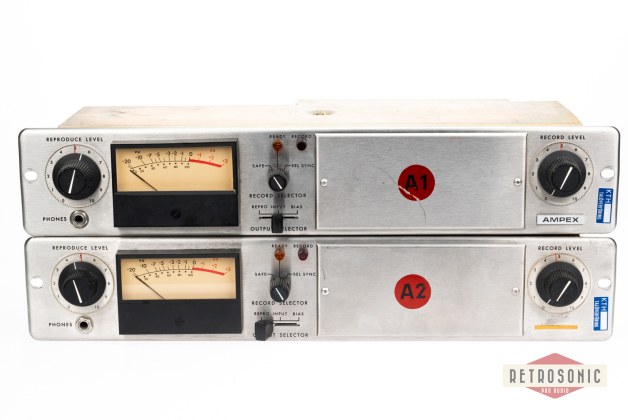
Ampex
Ampex is an American electronics company founded in 1944 by Alexander M. Poniatoff as a spin-off of Dalmo-Victor.[1][2] The name AMPEX is a portmanteau, created by its founder, which stands for Alexander M. Poniatoff Excellence.[3] Today, Ampex operates as Ampex Data Systems Corporation, a subsidiary of Delta Information Systems, and consists of two business units. The Silicon Valley unit, known internally as Ampex Data Systems (ADS), manufactures digital data storage systems capable of functioning in harsh environments. The Colorado Springs, Colorado unit, referred to as Ampex Intelligent Systems (AIS), serves as a laboratory and hub for the company's line of industrial control systems, cyber security products and services and its artificial intelligence/machine learning technology.
Ampex's first great success was a line of reel-to-reel tape recorders developed from the German wartime Magnetophon system at the behest of Bing Crosby. Ampex quickly became a leader in audio tape technology, developing many of the analog recording formats for both music and movies that remained in use into the 1990s. Starting in the 1950s, the company began developing video tape recorders, and later introduced the helical scan concept that make home video players possible. They also introduced multi-track recording, slow-motion and instant playback television, and a host of other advances. Ampex's tape business was rendered obsolete during the 1990s, and the company turned to digital storage products.
Ampex moved into digital storage for DoD Flight Test Instrumentation (FTI) with the introduction of the first, true all digital flight test recorder. Ampex supports numerous major DoD programs with the US Air Force, US Army, US Marines, US Navy and other government entities (NASA, DHS and national labs). Ampex also works with all major DoD primes and integrators including Boeing, General Atomics, Lockheed, Northrop, Raytheon and many others.
Currently, the Ampex is attempting to do more with the data stored on its network attached storage (NAS) devices. This includes adding encryption for secure data storage; algorithms focused on control system cyber security for infrastructure and aerospace platforms; and artificial intelligence/machine learning for automated entity identification and data analytics.
Source: Wikipedia
Sort by:
Newest
1 Results
